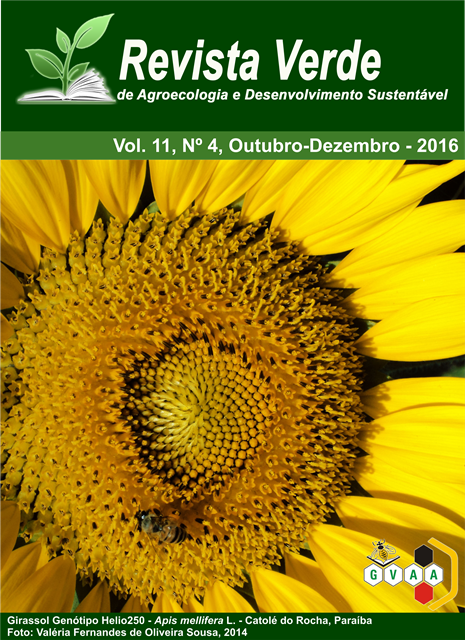Qualidade da carcaça bovina comercializada no município de Assunção, Paraíba
DOI:
https://doi.org/10.18378/rvads.v11i4.4554Palabras clave:
Produtos cárneos, Comercialização, Cariri paraibanoResumen
Objetivou-se estudar a qualidade da carcaça bovina comercializada no município de Assunção na região do Cariri paraibano, onde se verificou os fatores que influenciam a qualidade da carne, desde as condições antes, durante e depois do abate, bem como a comercialização, e a higiene-sanitária, através dos procedimentos metodológicos: entrevistas com os comerciantes, visitas aos abatedouros e pontos comerciais, além de análise microbiológica das carnes, fazendo a comparação da carne comercializada na feira livre e no açougue. Os resultados obtidos apontaram que vários motivos levam os consumidores a adquirir a carne nesses pontos comerciais, como forma de pagamento, preço, conhecimento da origem e abate do animal, qualidade, falta de opção, entre outros, havendo destaque para o preço na feira livre (29%) e a forma de pagamento no açougue (27%). Na entrevista com os consumidores, a carne foi classificada como boa, regular e ruim; sendo que 60% dos consumidores (açougue) e 42% (feira livre) consideraram a qualidade da carne como boa; 40% (açougue) e 42% (feira livre), a consideraram regular, e 17% (feira livre) classificou a mesma como ruim. A análise microbiológica efetuada comprovou que todas as amostras coletadas encontraram altos índices de contaminação, estando muito acima do limite permitido pela legislação vigente no país para os parâmetros pesquisados, especialmente na feira livre, onde foram evidenciados os maiores índices de contaminação, principalmente pela presença de Salmonella spp. Comprovando que se faz necessário um maior controle de qualidade da carne comercializada em ambos os estabelecimentos.
Quality of bovine carcass marketed in the municipality of Assunção, Paraíba
Abstract: This work aimed to study the bovine carcass quality marketed in the city of Assunção in the region of Cariri Paraíba, where it was found the factors that influence the quality of meat from the conditions before, during and after slaughter and marketing, and hygiene, through methodological procedure: interviews with traders, visits to abattoirs and trade points, and microbiological analysis of meat, making the comparison of the meat sold in the open market and butcher. The results showed that various reasons lead consumers to purchase the meat in these outlets as a means of payment, price, knowledge of the origin and slaughter of the animal, quality, lack of choice, among others, with emphasis on the price on the open market (29%) and the form of payment in the meat (27%). In the interview with the consumer, the meat was classified as good, fair and poor; and 60% of consumers (butchers) and 42% (open market) considered the quality of the meat as good; 40% (butcher) and 42% (flea market), the considered regular, and 17% (open market) ranked the same as bad. Microbiological analysis performed, proved that all the collected samples found high levels of contamination, is well above the limit allowed by law in the country for the studied parameters, especially in the free market, where the highest infection rates were evidenced mainly by the presence Salmonella spp. Proving that it is necessary a greater quality control of meat sold in both establishments.











